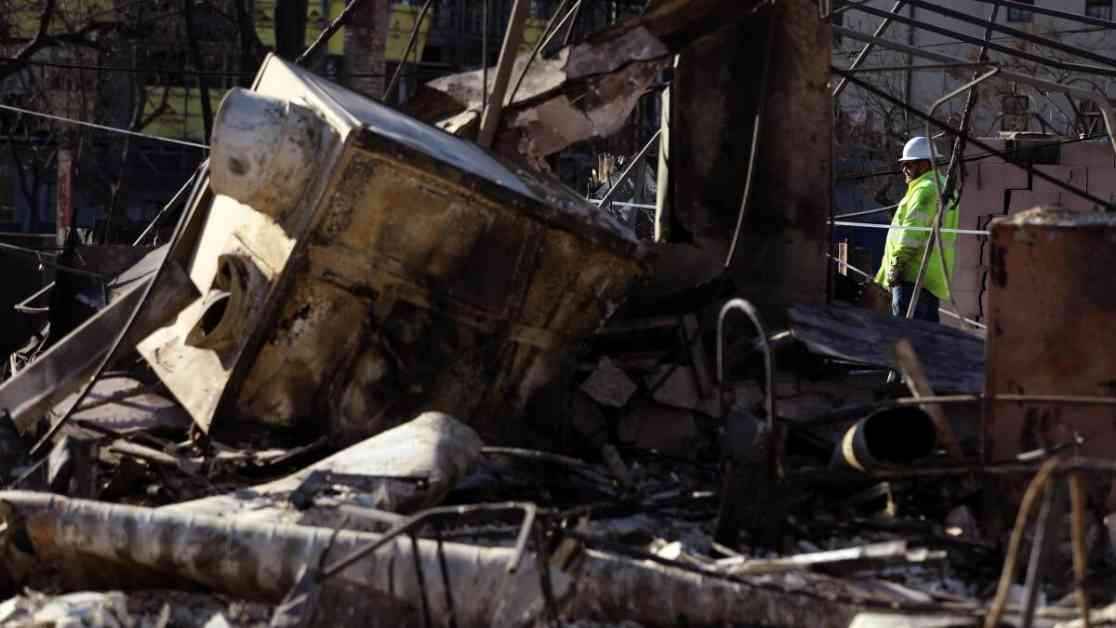Investigations into the Eaton fire that ravaged Altadena are intensifying as attorneys representing affected residents accuse Southern California Edison (SCE) of tampering with critical evidence. The controversy centers around the utility’s decision to re-energize transmission lines secretly, potentially altering key evidence that could determine the fire’s origin.
The law firm Edelson PC, representing homeowners who lost their properties in the Eaton fire, filed a motion on Monday seeking sanctions against SCE. They alleged that the utility violated promises not to touch the transmission lines in Eaton Canyon, despite knowing about a pending restraining order that required the preservation of potential evidence. In response, Kathleen Dunleavy, a spokesperson for Edison, refuted the claims, stating that the utility had notified attorneys before re-energizing the equipment and before the court’s ruling on the restraining order.
The re-energization of the transmission lines on Jan. 19, nearly two weeks after the Eaton fire started, has become a focal point of the dispute. Attorneys suing the utility are questioning the transparency of SCE’s actions during this critical period. The tension surrounding the investigation and litigation has heightened as both processes unfold simultaneously.
**Edison’s Actions Leading Up to the Eaton Fire**
Following the outbreak of the Eaton fire on Jan. 7, Edison initially de-energized the transmission lines in Eaton Canyon. However, a few days later, the lines were re-energized, only to be powered down again on Jan. 12. Subsequently, homeowners from Altadena sued Edison, alleging its involvement in the fire and seeking a court order to maintain potential evidence during the investigation.
On Jan. 17, attorneys representing Edison sent a letter to plaintiffs, informing them about the cleaning of insulators in the towers to remove fire retardant. The letter also mentioned the urgency of re-energizing the transmission towers to provide power to approximately 50,000 residents. Despite Edison’s claims of providing notifications about the next steps, concerns arose when, on Jan. 19, the utility re-energized the transmission lines in Eaton Canyon and Eagle Rock-Gould line.
An observation by company personnel during the re-energization revealed small flashes of white light on the transmission tower, raising suspicions of irregularities in the electrical equipment. These white flashes were seen on a transmission tower carrying the Mesa-Vincent and Goodrich-Gould lines, as well as on a transmission structure that had been inactive since 1971.
**Allegations of Evidence Tampering**
The actions taken by SCE on Jan. 19 have led to accusations of potential evidence tampering by the Altadena homeowners’ attorneys. Their concerns are grounded in the belief that the re-energization event may have compromised evidence implicating Edison’s equipment in sparking the fire. The attorneys argue that this incident, along with previous irregularities flagged to state regulators, raises serious doubts about the utility’s role in the fire’s ignition.
The discovery of a fault on Edison’s Eagle Rock-Gould line on the day of the fire, roughly five circuit miles from the suspected ignition point, further deepened suspicions of equipment malfunction. Additionally, the delay in disclosing information about the white flashes observed during the Jan. 19 re-energization has fueled skepticism about the utility’s transparency in the investigation.
Attorney Alexander Robertson, representing one of the firms that signed a letter to Edison expressing concerns, highlighted the significance of the utility’s actions. He criticized Edison for re-energizing the transmission lines in the suspected ignition area covertly and failing to disclose critical information to regulators, investigators, or the public promptly.
The letter signed by 14 firms demands that SCE provide video footage, photographs, LiDAR scans, and monitoring data related to the Jan. 19 re-energization event. The request aims to shed light on the sequence of events and any potential irregularities that might have occurred during that crucial period.
As the investigation into the Eaton fire unfolds, the allegations of evidence tampering against Southern California Edison continue to cast a shadow over the utility’s credibility. The conflicting narratives presented by the attorneys and the utility highlight the complexities surrounding the case, emphasizing the need for transparency and accountability in uncovering the truth behind the devastating blaze.


